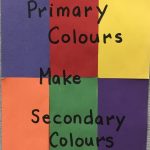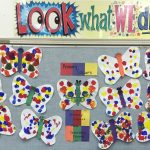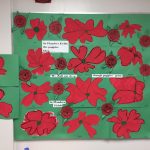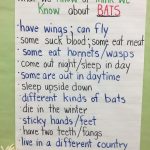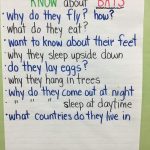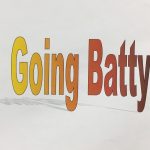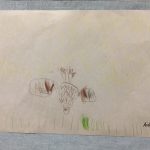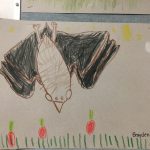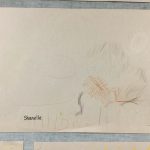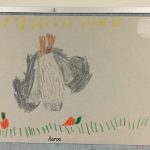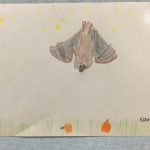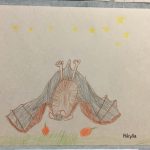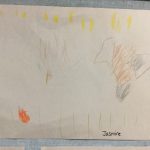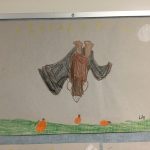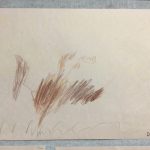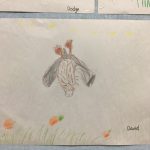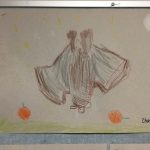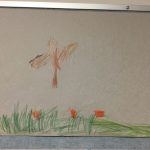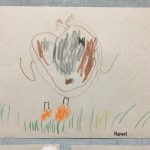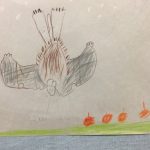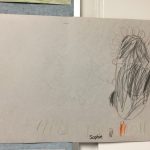Students have been learning about colour theory through our explorations in Art. Two weeks ago they learned about the three primary colours – red, yellow, and blue – and created pictures using just those three crayons. On Friday we used the primary coloured paints. They heard a story about a mischievous butterfly who got into Mother Nature’s way while she was painting a garden and ended up being very colourful. They then experimented with paints and a butterfly shaped paper. They put dabs of paint on one side of their paper, folded the paper closed, and rubbed the two sides together. The results were many (mostly) symmetrical butterflies. They made construction paper bodies which they glued onto the wings today when they were dry. The addition of pipe cleaner antenna finished the look. Students were encouraged to try and have the primary colours close in some spots so that they could flow together to create the secondary colours – green, orange, and violet (purple) – when pressed together.
These are on the bulletin board at the back of our classroom.

